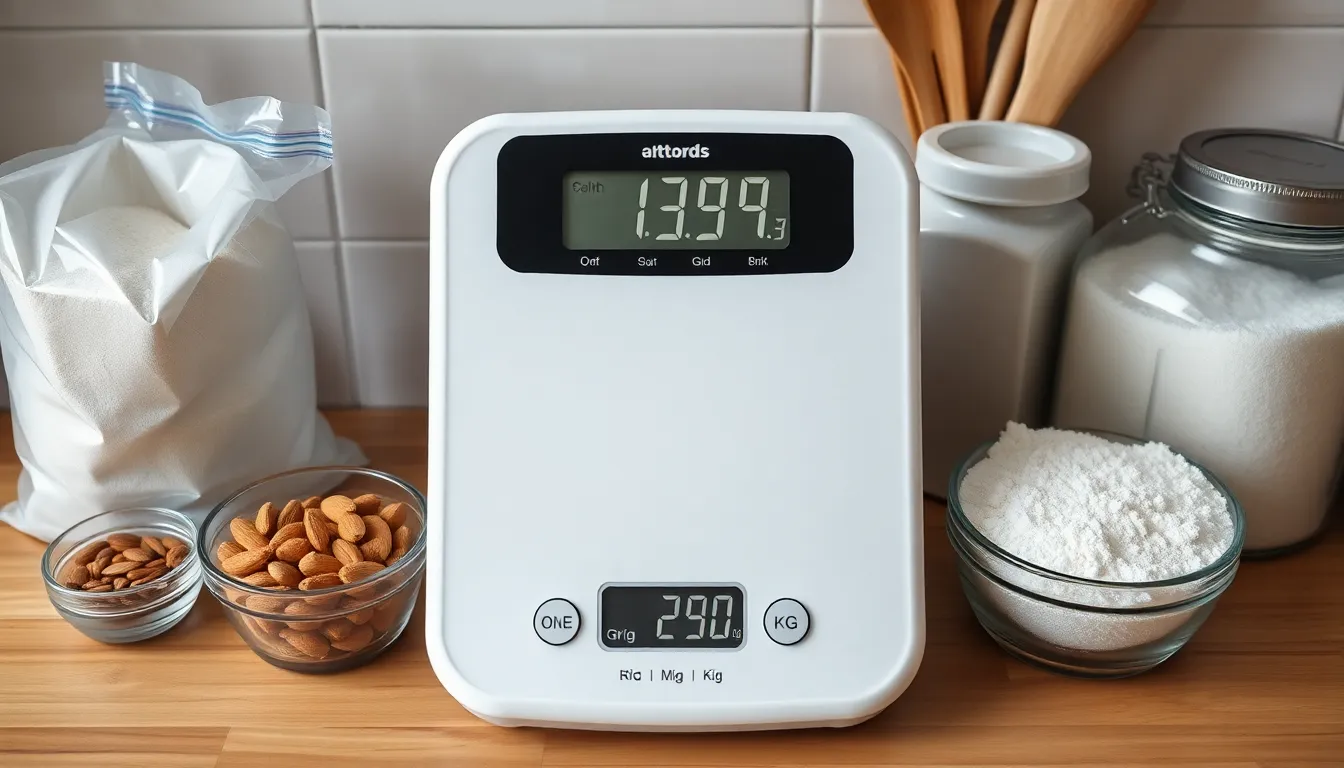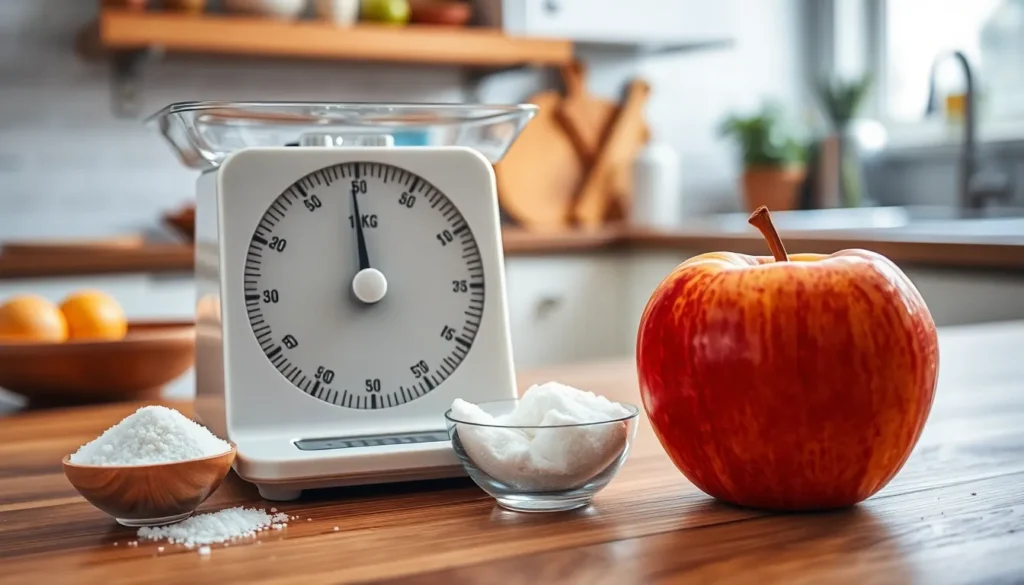Table of Contents
ToggleWhen it comes to measuring weight, understanding the relationship between grams and kilograms is essential. These two units are widely used in various fields, from cooking to science, making it crucial to grasp their conversion. With the metric system being a standard in many countries, knowing how many grams are in a kilogram can simplify everyday tasks and enhance accuracy in measurements.
A kilogram is a larger unit of mass, commonly used for heavier items, while grams are typically used for lighter objects. This article will break down the conversion process, providing clarity on how many grams fit into a kilogram. Whether you’re a student, a professional, or just curious, mastering this conversion will empower you in your daily life.
Understanding Weight Measurements
Understanding grams and kilograms is essential for accurate measurements in various tasks. These units form the foundation of the metric system, facilitating effective communication in cooking, science, and other fields.
What Is a Gram?
A gram is a metric unit of mass equal to one-thousandth of a kilogram. Grams are commonly used to measure light objects. For example, a teaspoon of sugar weighs around 4 grams, while a medium-sized apple typically weighs about 150 grams. Grams provide precision in recipes and nutritional information, emphasizing their importance in everyday tasks.
What Is a Kilogram?
A kilogram is a metric unit of mass, equivalent to 1,000 grams. Kilograms are suitable for measuring heavier items. For instance, a liter of water weighs approximately 1 kilogram, and a bag of flour usually weighs around 1 kilogram. Using kilograms allows for easier handling of larger weights, particularly in cooking and food preparation, where many recipes are designed with these measurements in mind.
Conversion Basics

Understanding conversion between grams and kilograms is essential for accurate measurement. Grams and kilograms represent mass in the metric system, facilitating straightforward calculations and conversions in daily tasks.
Conversion Formula
The basic conversion formula involves recognizing that 1 kilogram equals 1,000 grams. Therefore, to convert kilograms to grams, multiply the kilogram value by 1,000. Conversely, to convert grams to kilograms, divide the gram value by 1,000.
Example:
- 5 kilograms equals 5,000 grams (5 x 1,000).
- 2,500 grams equals 2.5 kilograms (2,500 ÷ 1,000).
Practical Examples
Using practical examples helps illustrate the conversions:
- A bag of flour weighing 2 kilograms is equal to 2,000 grams.
- A small package of almonds weighing 200 grams is equal to 0.2 kilograms.
- A recipe calling for 250 grams of sugar translates to 0.25 kilograms.
These straightforward examples demonstrate how to apply the conversion formula in everyday situations, such as cooking or shopping.
Common Uses of Grams and Kilograms
Grams and kilograms serve crucial roles in multiple daily activities. Their applications span cooking, scientific research, and healthcare.
In Cooking
Grams and kilograms are vital in cooking for accurate ingredient measurement. Most recipes specify ingredient amounts in grams for precision. For instance, a recipe might call for 200 grams of flour, ensuring consistency in texture and taste. Using kilograms for larger quantities simplifies calculation; a large batch of cookie dough typically requires 1 kilogram of sugar. Both units ensure that cooks achieve desired results while maintaining portion control and nutritional balance.
In Science
Grams and kilograms are widely used in scientific fields for measuring mass. Laboratory experiments often require precise measurements, where grams ensure accuracy for substances like chemicals or biological samples. For example, a precise measurement of 50 grams of a reagent may be necessary for a chemical reaction. Conversely, kilograms are used for larger samples, such as measuring the mass of a large container of liquid. This distinction helps scientists communicate results and maintain consistency across different experiments.
FAQs About Weight Conversions
Weight conversions often raise questions, especially between grams and kilograms. Understanding these nuances aids in accurate measuring and communication.
Common Misconceptions
- A Gram Equals a Kilogram: Many believe that a gram and a kilogram are interchangeable. However, a gram is one-thousandth of a kilogram. Knowing this distinction is crucial for proper conversion.
- Weight Always Equals Volume: Some assume that weight and volume are uniform. The weight of a substance varies by its density. For example, a liter of water weighs about 1 kilogram, but a liter of oil weighs less.
- Only Conversion Needed for Cooking: A common belief is that conversions apply solely in cooking. Yet, they are essential in scientific research, healthcare, and various industries where precise measurements matter.
Tips for Accurate Conversions
- Use the Conversion Formula: Remember, 1 kilogram equals 1,000 grams. This formula simplifies the process remarkably.
- Double Check Measurements: Always verify weights using a reliable scale, especially when precision impacts outcomes, such as in baking or pharmaceutical applications.
- Utilize Digital Converters: Online conversion tools or calculator apps offer quick and convenient ways to ensure accuracy in measurements, particularly beneficial for complex conversions.
- Practice with Real Examples: Familiarizing oneself with practical examples, like measuring ingredients for recipes or checking package weights, enhances confidence in conversions.
- Stay Consistent with Units: When converting, maintain the same unit type throughout. This helps avoid confusion and ensures clarity in calculations.
These tips and clarifications enable a better understanding of weight conversions, making daily tasks easier and more efficient.
Mastering the conversion between grams and kilograms is essential for anyone engaged in cooking, science, or daily activities. Understanding that one kilogram equals 1,000 grams simplifies the process of measuring and ensures accuracy in various tasks. This knowledge not only enhances the quality of recipes but also supports effective communication in scientific and healthcare settings. By applying the tips and examples provided, individuals can confidently navigate weight measurements, making everyday tasks more efficient. Embracing this fundamental skill empowers everyone to achieve consistent results in their culinary endeavors and beyond.







